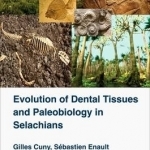Evolution of Dental Tissues and Paleobiology in Selachians
BookThis item doesn’t have any media yet
2017 | Science & Mathematics
Evolution of Dental Tissues and Paleobiology in Selachians offers a complete overview of the terminology used to describe fish tooth microstructures, focusing on the evolution of the teeth microstructure of the cartilaginous fishes. Enameloid microstructure has become a powerful tool to decipher the phylogenetic affinities of isolated fossil chondrichthyan teeth, and, more particularly, to study the transition between the hybodont and modern elasmobranchs. However, this field of research remains quite cryptic, mostly due to limited taxon sampling. As a result, numerous approximations, particularly involving terminology, are still found in the scientific literature, and research into the relationships between the microstructure and function of teeth is just starting. Sharks and their relatives (chondrichthyans) are often seen as "living-fossils" that did not evolve much during their more than 400 million years of long history. This is incorrect, but many forget that their teeth-a hallmark of sharks-developed many innovations in terms of microstructure that allow these animals to develop a wide range of feeding strategies.
The iconic triangular, serrated teeth of the white shark is for example a rather recent innovation linked to the development of a special microstructure of their enameloid. Similar innovations led to a specialization to durophagous diets in some rays.
Related Items:
| Published by | ISTE Press Ltd - Elsevier Inc |
| Edition | Unknown |
| ISBN | 9781785481390 |
| Language | N/A |
Images And Data Courtesy Of: ISTE Press Ltd - Elsevier Inc.
This content (including text, images, videos and other media) is published and used in accordance
with Fair Use.
